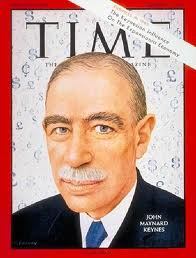Laplace and the principle of insufficient reason (wonkish) After their first night in paradise, and having seen the sun rise in the morning, Adam and Eve were wondering if they were to experience another sunrise or not. Given the rather restricted sample of sunrises experienced, what could they expect? According to Laplace’s rule of succession, the probability of an event E happening after it has occurred n times is p(E|n) = (n+1)/(n+2). The probabilities can be calculated using Bayes’ rule, but to get the calculations going, Adam and Eve must have an a priori probability (a base rate) to start with. The Bayesian rule of thumb is to simply assume that all outcomes are equally likely. Applying this rule Adam’s and Eve’s probabilities become 1/2, 2/3, 3/4
Topics:
Lars Pålsson Syll considers the following as important: Theory of Science & Methodology
This could be interesting, too:
Lars Pålsson Syll writes Kausalitet — en crash course
Lars Pålsson Syll writes Randomization and causal claims
Lars Pålsson Syll writes Race and sex as causes
Lars Pålsson Syll writes Randomization — a philosophical device gone astray
Laplace and the principle of insufficient reason (wonkish)
 After their first night in paradise, and having seen the sun rise in the morning, Adam and Eve were wondering if they were to experience another sunrise or not. Given the rather restricted sample of sunrises experienced, what could they expect? According to Laplace’s rule of succession, the probability of an event E happening after it has occurred n times is
After their first night in paradise, and having seen the sun rise in the morning, Adam and Eve were wondering if they were to experience another sunrise or not. Given the rather restricted sample of sunrises experienced, what could they expect? According to Laplace’s rule of succession, the probability of an event E happening after it has occurred n times is
p(E|n) = (n+1)/(n+2).
The probabilities can be calculated using Bayes’ rule, but to get the calculations going, Adam and Eve must have an a priori probability (a base rate) to start with. The Bayesian rule of thumb is to simply assume that all outcomes are equally likely. Applying this rule Adam’s and Eve’s probabilities become 1/2, 2/3, 3/4 …
 Now this seems rather straight forward, but as already Keynes noted in Treatise on Probability (1921), there might be a problem here. The problem has to do with the prior probability and where it is assumed to come from. Is the appeal of the principle of insufficient reason – the principle of indifference – really warranted? Laborating on Keynes example, Gillies wine-water paradox in Philosophcal Theories of Probability (2000) shows it may not be so straight forward after all.
Now this seems rather straight forward, but as already Keynes noted in Treatise on Probability (1921), there might be a problem here. The problem has to do with the prior probability and where it is assumed to come from. Is the appeal of the principle of insufficient reason – the principle of indifference – really warranted? Laborating on Keynes example, Gillies wine-water paradox in Philosophcal Theories of Probability (2000) shows it may not be so straight forward after all.
Assume there is a certain quantity of liquid containing wine and water mixed so that the ratio of wine to water (r) is between 1/3 and 3/1. What is then the probability that r ≤ 2? The principle of insufficient reason means that we have to treat all r-values as equiprobable, assigning a uniform probability distribution between 1/3 and 3/1, which gives the probability of r ≤ 2 = [(2-1/3)/(3-1/3)] = 5/8.
But to say r ≤ 2 is equivalent to saying that 1/r ≥ ½. Applying the principle now, however, gives the probability of 1/r ≥ 1/2 = [(3-1/2)/(3-1/3)]=15/16. So we seem to get two different answers that both follow from the same application of the principle of insufficient reason. Given this unsolved paradox, we have good reason to stick with Keynes (and be sceptical of Bayesianism).
